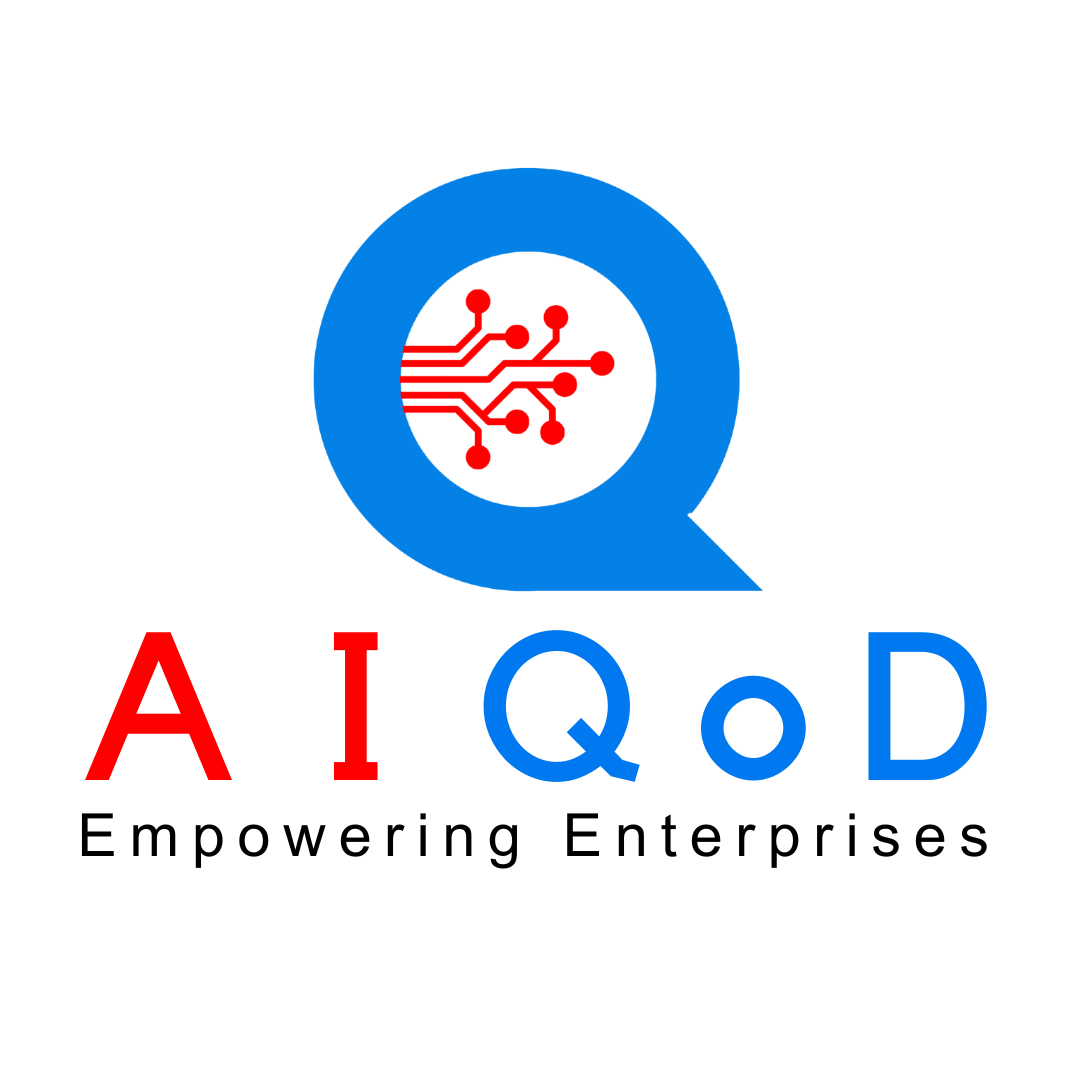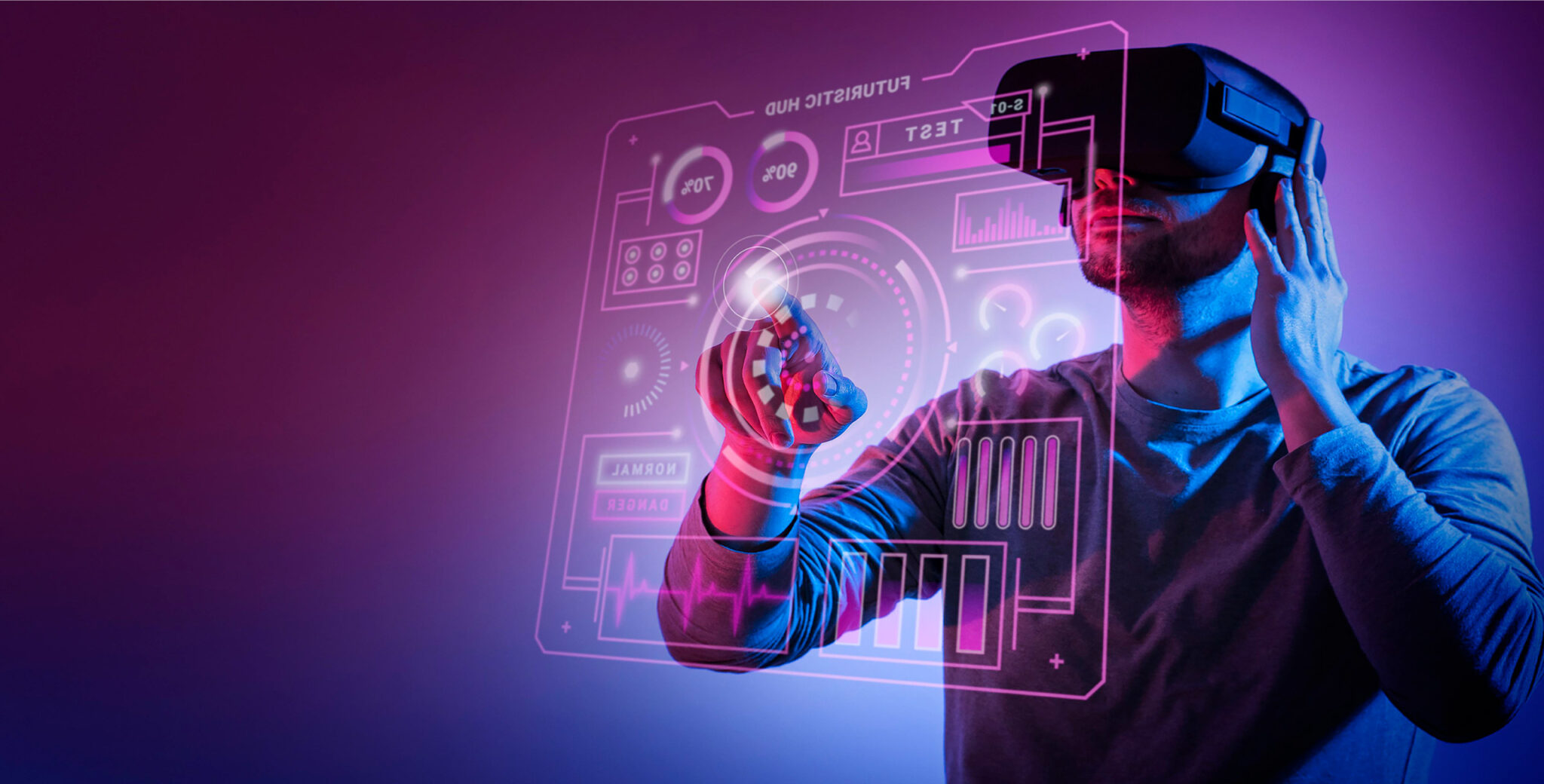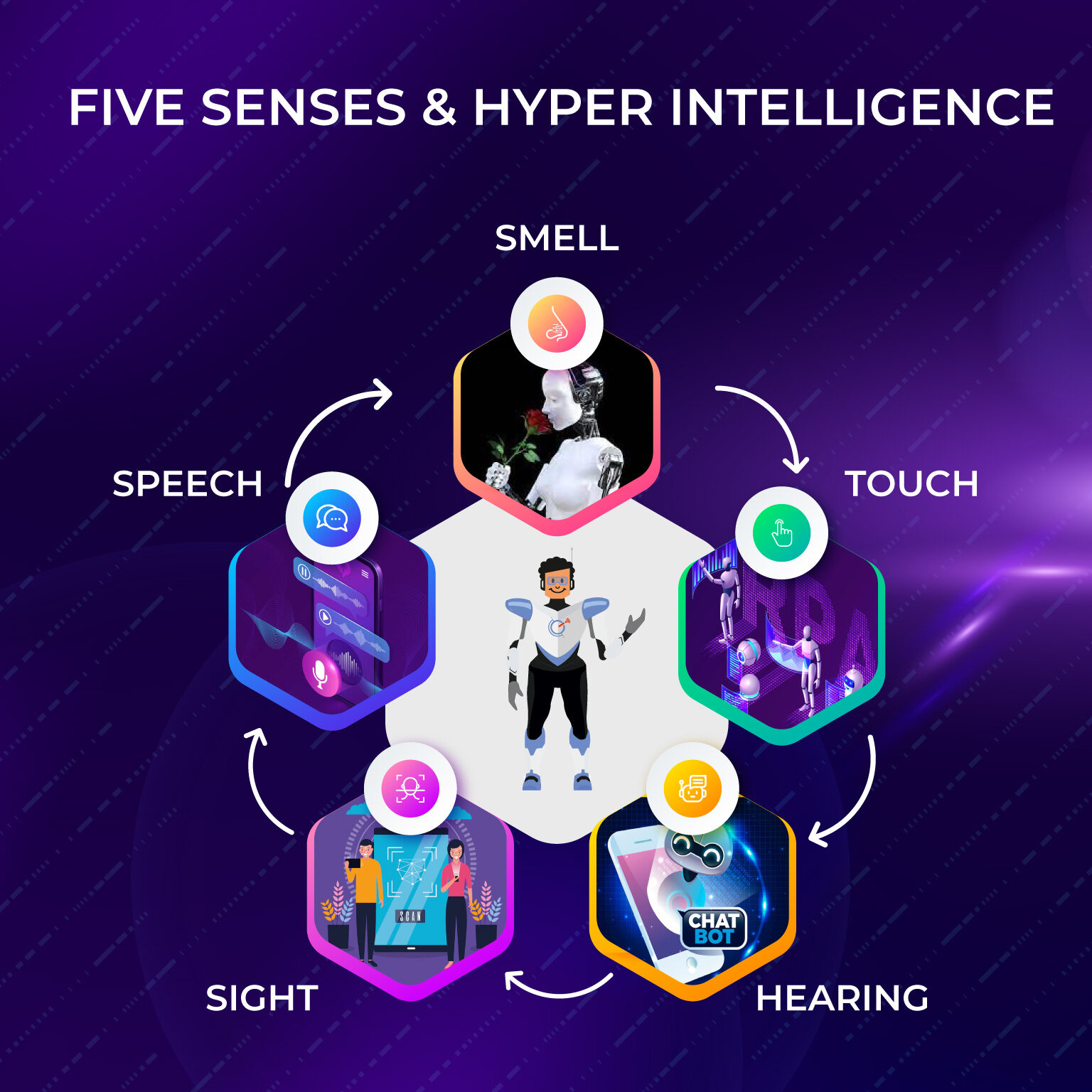Five Senses & Hyper-Automation
 AIQoD
AIQoD
Hyper-Automation is the automation of activities that were done by humans and exactly the way we would expect humans to do it. When we look at automation of activities it is primarily driven by the 5 human senses and humans have tried to mimic those in the real world and to elevate human life.
From driverless cars to smart virtual assistants, from biometric sensors to connected devices, from smart cities to connected homes; the use of technology has become widespread. Many activities that we used to do physically are already automated, it has become a new norm for all of us and the future would be even more interesting with some amazing technologies shaping our lives in the coming years.
Similarly Automation has become one of the biggest needs for enterprises to improve efficiency, save cost, and also to speed up their operations. Automation empowers organizations by helping them embrace these new technologies with ease and reap the benefits of the technology through different platforms which gives that edge to the enterprises.

Hyper Intelligence
Let’s try to draw an analogy between our senses and Automation :
- Sense of Touch: Touch refers to the human ability to use our fingers/surface of the skin in ways that allow us to identify our surroundings. In organizations, there are a lot and lots of people who are actually doing touch-based activities that help them to make appropriate decisions. For example, Invoice Data-Entry is such a process, wherein an organization that receives vendors’ invoices on the generation of purchase orders while purchasing/ordering some equipment/service. These invoices are actually punched into Accounting/ERP systems by individuals in the accounts department. This task is time-consuming, prone to manual errors, and a cumbersome task to deal with.
Technology like RPA has been there in this segment, a few examples of those would be Accounts Payable Automation, Accounts Receivable Automation, etc. These technologies help to make the whole process automated by fetching documents from multiple sources, sorting them, and extracting details of required fields; these details are then reconciled/matched with other documents and finally punched into Accounting/ERP systems without much human intervention except in the case of exceptions.
2. Sense of Hearing: Sense of Hearing helps us to communicate with our surroundings by experiencing the vibrations created by sound. Let’s take an example, we are all familiar with Call centers, you need to call the helpline number of a firm, in case you need to reach out to them. Someone would pick up the call and answer your queries.
Now, this physical process is automated using Chatbots, IVRs, etc. So as soon as you open the website a chatbot appears welcoming you and straightaway asking you for your queries, you just need to type your question, and most of the time you get responses from the chatbot itself, in a faster and aligned response equivalent to your expectation.
3. Sense of Sight: One of the most powerful senses of humans that makes us see the world as it is, guides us and helps us in clear processing and understanding of things around us through proper visualization and interpretation.
Let’s understand the technology equivalent for the same
A. OCR(Optical Character Recognition)
OCR is an older technology that is in existence for the past but over time has been advanced using modern technologies like artificial intelligence, machine learning, etc to enhance the processing capability similar to lenses and spectacles we use to improve our eye’s visibility.
From the organization’s perspective, if we talk about document processing of invoices, usually the accounting personnel looks at the invoice, reads it and interprets the data, and then punches it into the ERP system. This process of manual processing under workload conditions is prone to issues like manual typing errors, skipping of fields, misplacing of documents, wrong entries,etc
This has been replaced with the OCR technology which actually scans through the documents and extracts the information corresponding to different fields and accurately copies the data to the ERP/Accounting system without any errors and that also in a quick and efficient manner.
B. Face Detection:
This is one of the peculiar features of our eyes which helps us in recognizing individuals, places, and things to interpret, visualize and process information related to them.
Similarly, in the organizations this activity was usually done by the security guard standing at a gate where the person is actually verifying his/her ID card, verifying the person who’s actually getting into a building for security checks.
This manual process now gets replaced by the technology of Face Detection & Recognition, the software recognizes faces and then lets the individual in through the security checks. This technology is employed for multiple scenarios like attendance management, fraud management in insurance organizations, and video KYC in Banking & Insurance, surveillance & threat management at airports and other such locations, etc.
4. Sense of Speech:
The power to converse between individuals is also a key differentiator between humans and machines that helps them to express their feelings, share their thoughts and speak out their views.
We are all aware of modern technologies which all of us might have used or encountered like Alexa, Siri, Google Home, etc. in our day-to-day lives. Now we believe that in the future this technology is going to get into our professional lives as well where most of the operations could be executed using the power of speech, where instructions taken by machines will help us get things done.
5. Sense of Smell :
The sense of smell is another important sense that humans possess to help us detect desirable foods, hazards, etc in our surroundings.
On the technology side, there are bots that are built to smell odors. For example, E-nose, these bots are used in very hazardous environments like chemical factories to detect the smell and identify leakages, etc,. These can also be employed at places where human lives cannot be risked and after-effects of the leak, explosion, bombing, etc have to be sensed for the viability of existence.
So in a nutshell, for activities that are manual and repetitive in nature, Hyper-automation can be used to bridge the gap to help grow in a more efficient and faster manner. Technology and its innovation are for the empowerment of humans and not for their replacement, they will help us to excel, innovate and focus on more strategic activities.
For more insights on how to ” Enable the Digital Enterprise of the Future using Hyper-Automation & RPA“ view our webinar.
Subscribe to my newsletter
Read articles from AIQoD directly inside your inbox. Subscribe to the newsletter, and don't miss out.
Written by

AIQoD
AIQoD
Gen AI-Based Advanced Digital Transformation Platform